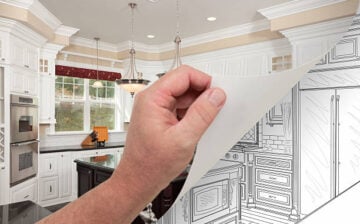Are you considering developing residential property? Whether you’re a seasoned property developer or just dipping your toes into the real estate market, embarking on a residential property development project can be both exciting and daunting. From scouting the perfect location to navigating legalities and construction, there are numerous steps involved in the process. To ensure success and maximise returns on your investment, it’s crucial not to overlook key steps along the way. In this comprehensive guide, we’ll walk you through essential aspects of residential property development, including one often underestimated step: Installing a Lift.
What is the Current Market Like for Residential Buildings?
Before delving into the intricacies of residential property development, it’s crucial to assess the current market landscape. Understanding market trends, dynamics, and demand-supply factors can provide valuable insights that shape your development strategy and maximize returns on investment.
Urbanization: As urban populations continue to grow, particularly in metropolitan areas, the demand for housing in urban centres has surged. Millennials and young professionals, in particular, are increasingly drawn to urban environments for employment opportunities, cultural amenities, and lifestyle conveniences.
Changing Lifestyles: Shifts in lifestyle preferences, such as remote work arrangements and a focus on wellness and sustainability, have influenced housing preferences. There is a growing demand for residential developments that offer flexible living spaces, modern amenities, and eco-friendly features.
Technology Integration: The integration of technology into residential buildings has become increasingly prevalent, with smart home features, energy-efficient systems, and high-speed internet connectivity driving demand. Homebuyers and renters are seeking properties equipped with cutting-edge technology that enhances comfort, convenience, and security.
Understanding the Market
Before breaking ground on any development project, it’s imperative to conduct thorough market research. Understanding current trends, demand-supply dynamics, and demographic shifts can provide invaluable insights into the type of property that will resonate with potential buyers or renters. Consider factors such as location preferences, amenities, and pricing trends to align your project with market demands effectively.
Installing a Lift: Elevating Accessibility and Convenience
One often overlooked aspect of residential property development is vertical mobility. Lift installation can significantly enhance accessibility and convenience for residents, particularly in multi-story buildings or developments catering to elderly or disabled individuals. A well-designed lift system not only improves the livability of the property but also adds value and appeal to prospective buyers or tenants.
When incorporating a lift into your development plans, consider factors such as capacity, speed, energy efficiency, and compliance with relevant safety standards such as LOLER (Lifting Operations and Lifting Equipment Regulations). Collaborate with experienced lift manufacturers and installation experts to design a solution that seamlessly integrates with the overall architectural aesthetic and meets the needs of residents across all demographics.
Securing Financing
Financing is the lifeblood of any development project. Whether you’re self-funding or seeking external investors, securing adequate financing is essential for smooth project execution. Explore various financing options, including traditional bank loans, private investors, or crowdfunding platforms, and choose the option that best fits your financial goals and risk appetite.
Site Selection and Acquisition
The success of your residential development hinges on choosing the right location. Conduct a comprehensive analysis of potential sites, considering factors such as proximity to amenities, transportation links, zoning regulations, and future development prospects. Once you’ve identified the perfect site, navigate the acquisition process diligently, ensuring compliance with legal requirements and negotiating favourable terms.
Design and Planning
The design phase is where your vision begins to take shape. Collaborate with architects, engineers, and designers to develop a concept that balances aesthetics, functionality, and cost-efficiency. Pay close attention to layout, building materials, and energy-efficient features to enhance the appeal and sustainability of your development. Additionally, incorporate universal design principles to ensure accessibility for all residents, including installing a lift for vertical mobility.
Obtaining Permits and Approvals
Navigating the regulatory landscape can be a complex and time-consuming process. From building permits to environmental approvals, ensure compliance with all relevant regulations and obtain necessary permits before commencing construction. Engage with local authorities and stakeholders proactively to streamline the approval process and avoid costly delays down the line.
Construction and Project Management
With permits in hand, it’s time to bring your vision to life. Select reputable contractors and construction firms with a track record of delivering high-quality work within budget and schedule. Implement robust project management practices to oversee construction progress, manage resources effectively, and address any unforeseen challenges that may arise during the build process.
Marketing and Sales
As completion nears, shift your focus to marketing and sales efforts to generate interest and secure buyers or tenants. Develop a comprehensive marketing strategy encompassing online and offline channels, including social media, real estate portals, and open houses. Highlight unique selling points of your development, such as modern amenities, green spaces, and, of course, the convenience of having a lift installed for residents.
Maintenance and Management
Once the development is occupied, ongoing maintenance and management are crucial for ensuring resident satisfaction and preserving property value. Establish clear protocols for routine maintenance tasks, such as lift maintenance, landscaping, cleaning, and repairs, and invest in property management services if necessary. Regularly solicit feedback from residents to address any concerns promptly and foster a sense of community within the development.
Closing Thoughts
Embarking on a residential property development journey requires careful planning, execution, and attention to detail. By following these key steps, from market research to maintenance, you can mitigate risks and maximise the success of your project. And don’t forget to include the installation of a lift in your development plans to enhance accessibility, convenience, and overall desirability. With the right strategy and vision, you can transform your property development aspirations into reality and create lasting value for both residents and investors alike.
We hope you found this blog post on Developing Residential Property? Don’t Miss These Key Steps, useful. Be sure to check out our post on Small Investors Pursue Passive Income In Real Estate for more great tips!
 Have Experience in the Moving Industry? Want an Additional Income Stream? Work With All Around Moving!
Have Experience in the Moving Industry? Want an Additional Income Stream? Work With All Around Moving!
Join our program! Partnering with All Around Moving Services helps you profit. Click here to learn more.






